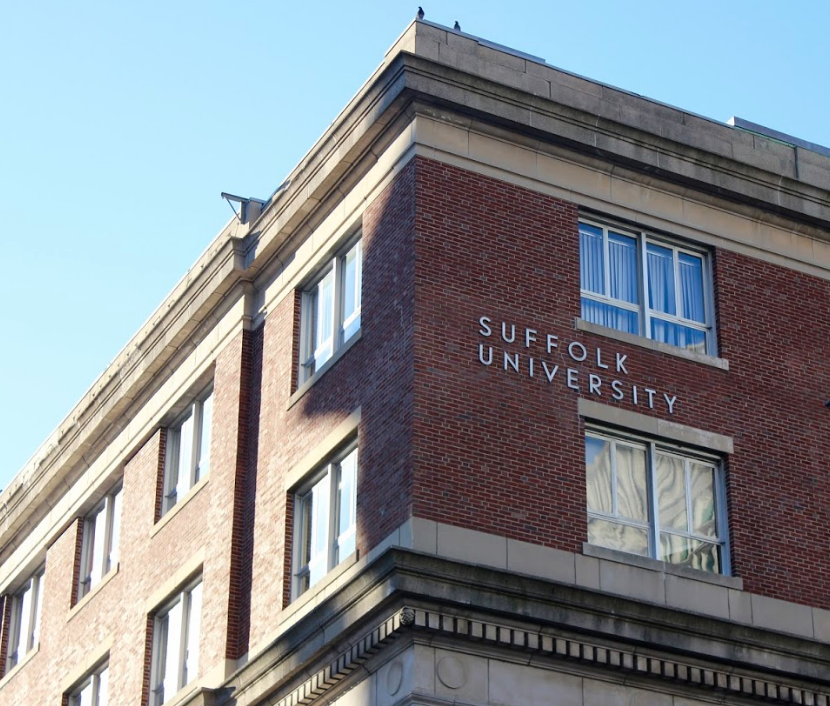Your donation will support the student journalists of Suffolk University. Your contribution will allow us to cover our annual website hosting costs.
Temple Street speaks out
Some residents say they did not want Suffolk to leave historic hill
April 12, 2017
More than 30 years ago, Ralph Indrisano moved into his brickstone- Revolutionary era apartment, which stood, overshadowed by Suffolk University’s properties known as the C. Walsh Theatre, the Archer and Donahue buildings. Students would travel up and down both Temple Street and Ridgeway Lane, a small alley just between Temple and Hancock Street, where they would get to and from the State House and Cambridge Street. The university was respectful, Indrisano said, and it was a “good feeling” to have Suffolk just across the street.
For years, Suffolk had helped the residents of Temple Street to conduct neighborhood “cleanups,” the university donated funds to purchase Temple Park and even went as far as maintaining the landscape of the rest of the street until leaving Beacon Hill last May.
“Suffolk was always kind to me and the rest of the Beacon Hill community,” said Indrisano, a resident who took various classes and even used the Mildred Sawyer Library, in an interview with a Journal reporter in November.
The Dedham, MA company JDMD Owner LLC, an affiliate of Center Court Properties, purchased Suffolk’s former properties for $43.5 million in July of 2015. The sale of the buildings came after the university’s several-year long battle with the Beacon Hill Civic Association who claimed that residents did not want college students in the area- including the two historic buildings on Temple Street any longer.
Since the sale, the purchaser, JDMD, has faced a number of issues on their proposed project of renovating the buildings to create 75 condos and 60 parking spaces in an underground garage. Temple Street residents have voiced their concern and opposition over both the height of the building being raised for a penthouse as well as the possible traffic increase on a predominantly pedestrian street.
The existing Donahue and Archer buildings are already 16.75 feet higher than height limit in Beacon Hill. The project design’s penthouses have made many residents worry about the cast shadows that are not currently there.
JDMD, who could not be contacted for an interview, has been approved to reconvert both buildings by the Beacon Hill Architectural Commission as of late February after months of revising outstanding issues to the proposal plans, but several residents of Temple Street said there have been no signs of construction, or even activity.
“The building – the birthplace of Suffolk University – has been recognized by the National Park Service and the Massachusetts Commission as a significant and important contributor to the National Landmark District,” said member of the Boston Redevelopment Authority’s original Institutional Advisory Group (IAG) Rob Whitney to the Beacon Hill Times in November on his frustration with JDMD’s proposition to add penthouse floors that would not align with the Hill’s historic “charm.”
Since late September, an alarm has sounded throughout the Donahue building. Many residents claimed in interviews with The Suffolk Journal that they called the number listed on sheets of paper in the windows of the Donahue building to reporting the alarms, but said that no one came to shut them off.
“It’s been really irritating to have the alarm constantly going off,” said Craig Bagley, who has lived on Temple Street for just over a year. “It’s been going off for months.”
In the 1970s, it was Suffolk that had aided the Beacon Hill Civic Association and the Northeast Slope Neighborhood Association transform the street from a neglected concrete slab into the brick walkway and minimal automotive traffic that it has today by donating funds.
One resident, who wished to remain anonymous said that “most” of the residents on Temple Street did not want the university to leave.
“I never did mind the university being there. It was their right,” said the woman in an interview with a Journal reporter in late February. “They were part of the historic neighborhood too. It was a shame when they left. We all thought so.”
The woman said that she had lived on Temple Street for a number of years but then moved onto Hancock Street. She said that the university would have “never” created the traffic that the proposed 60-space parking garage will and the traffic that the condos will create.
“We have lost that battle,” she said. “It’s not even the construction that we are concerned with, it’s what comes next with the influx of traffic.”
